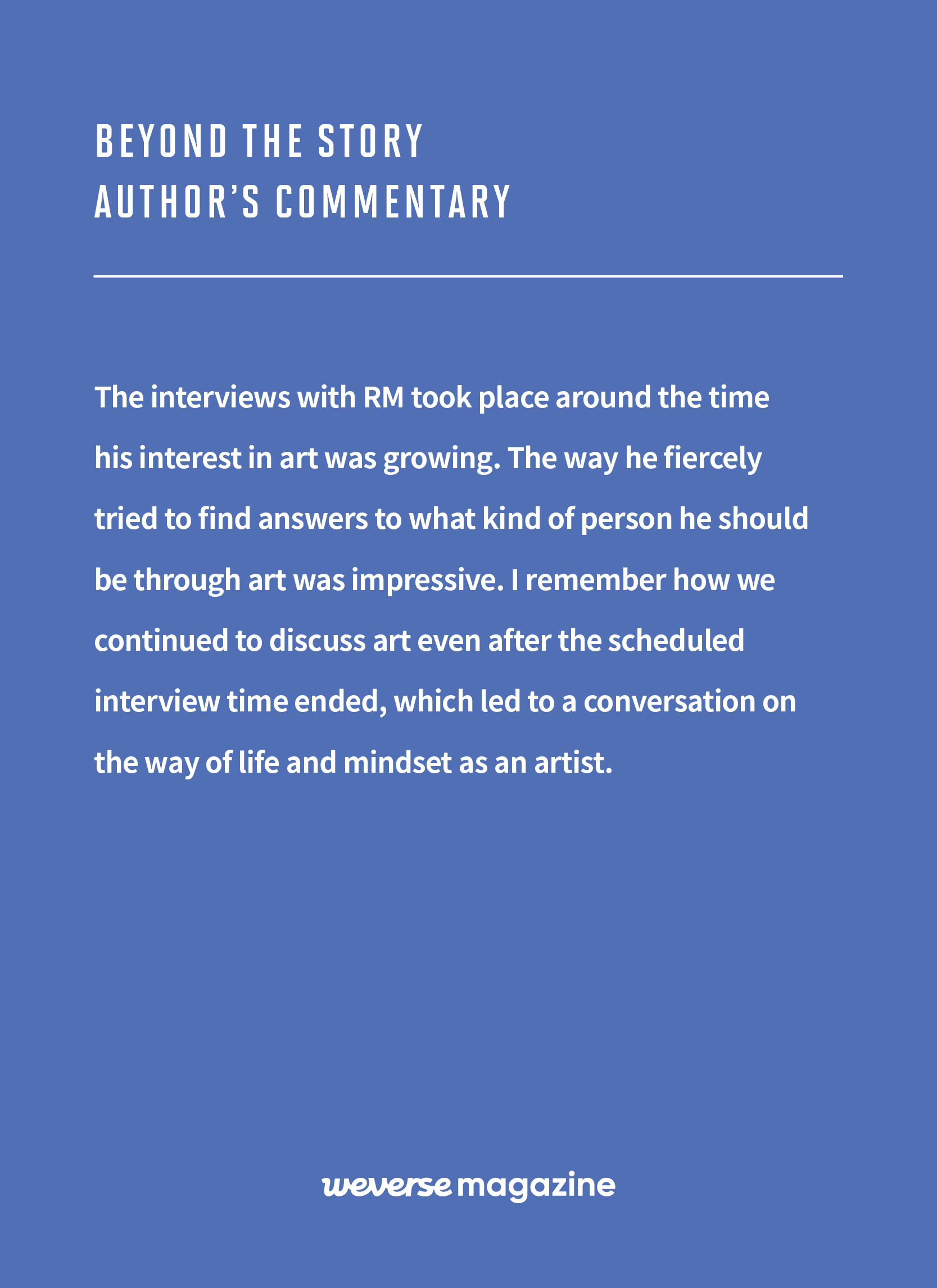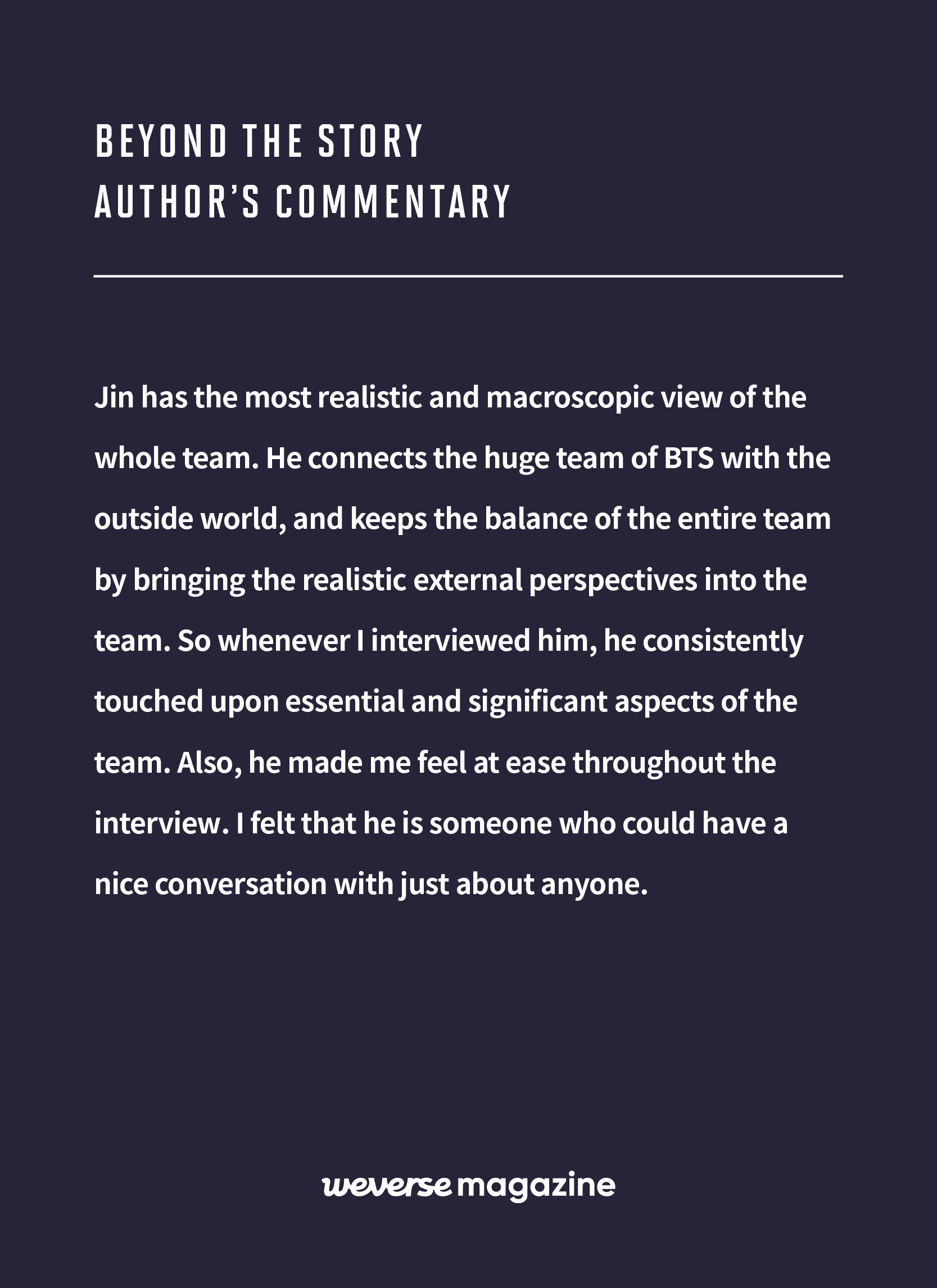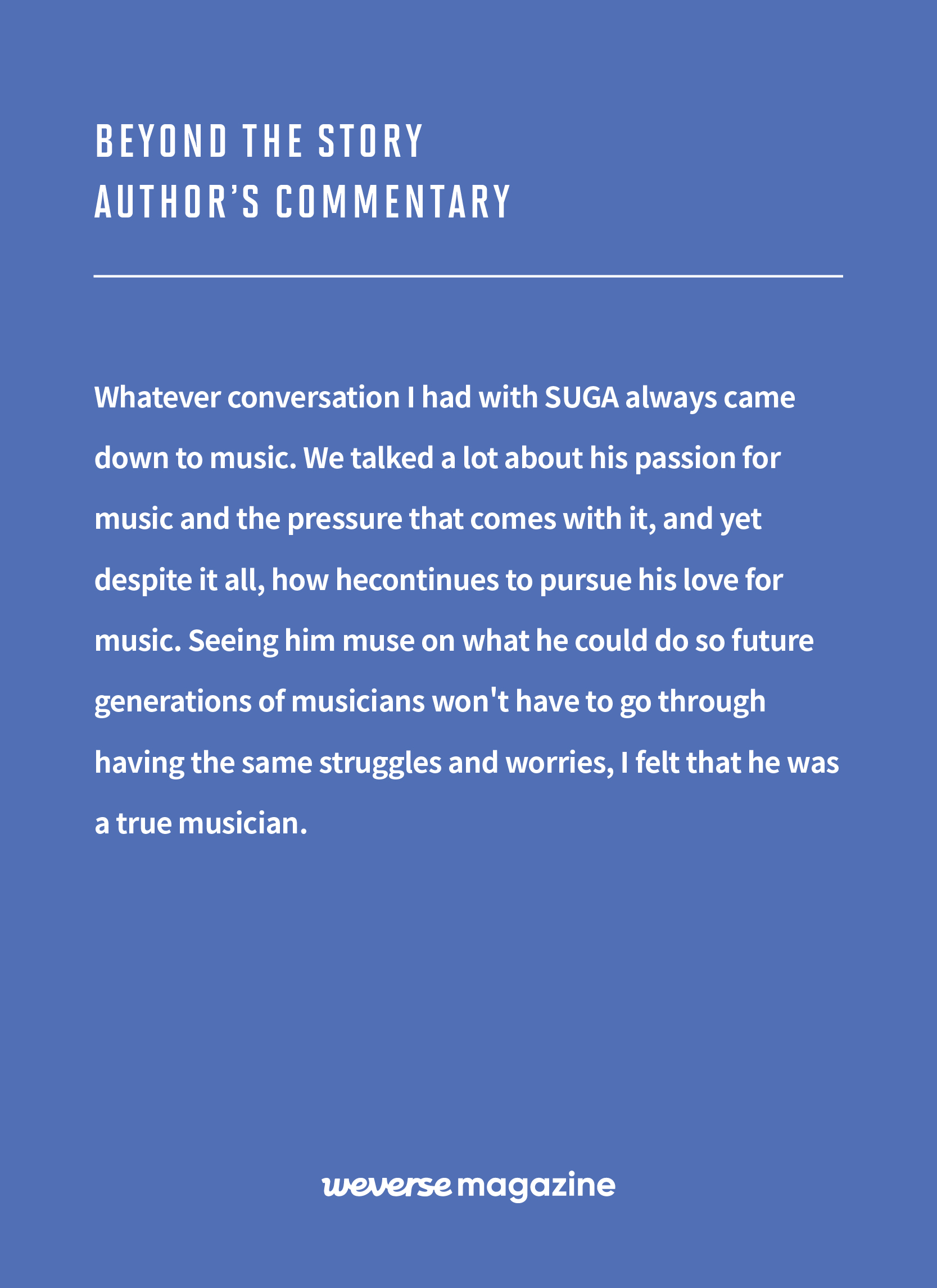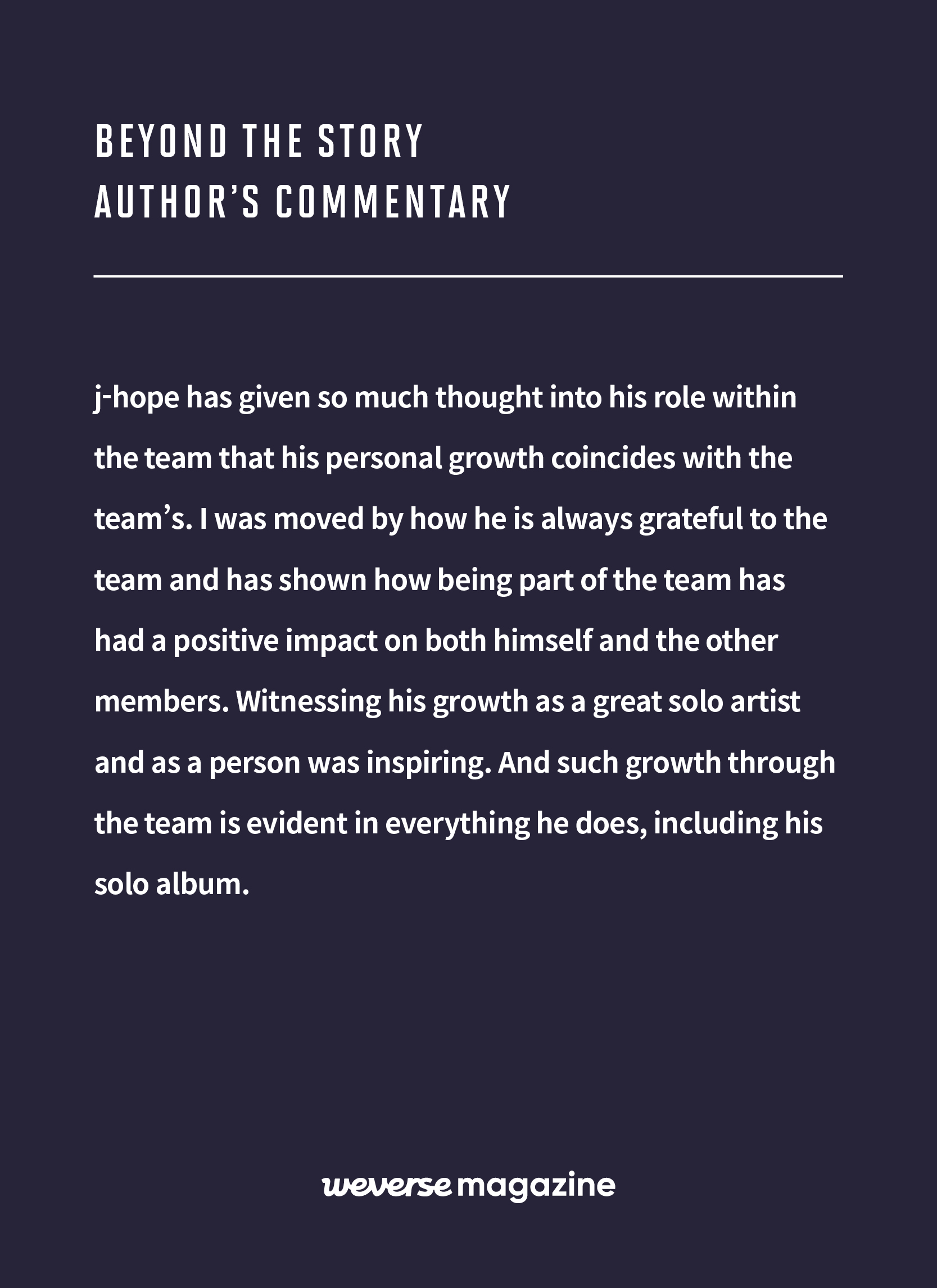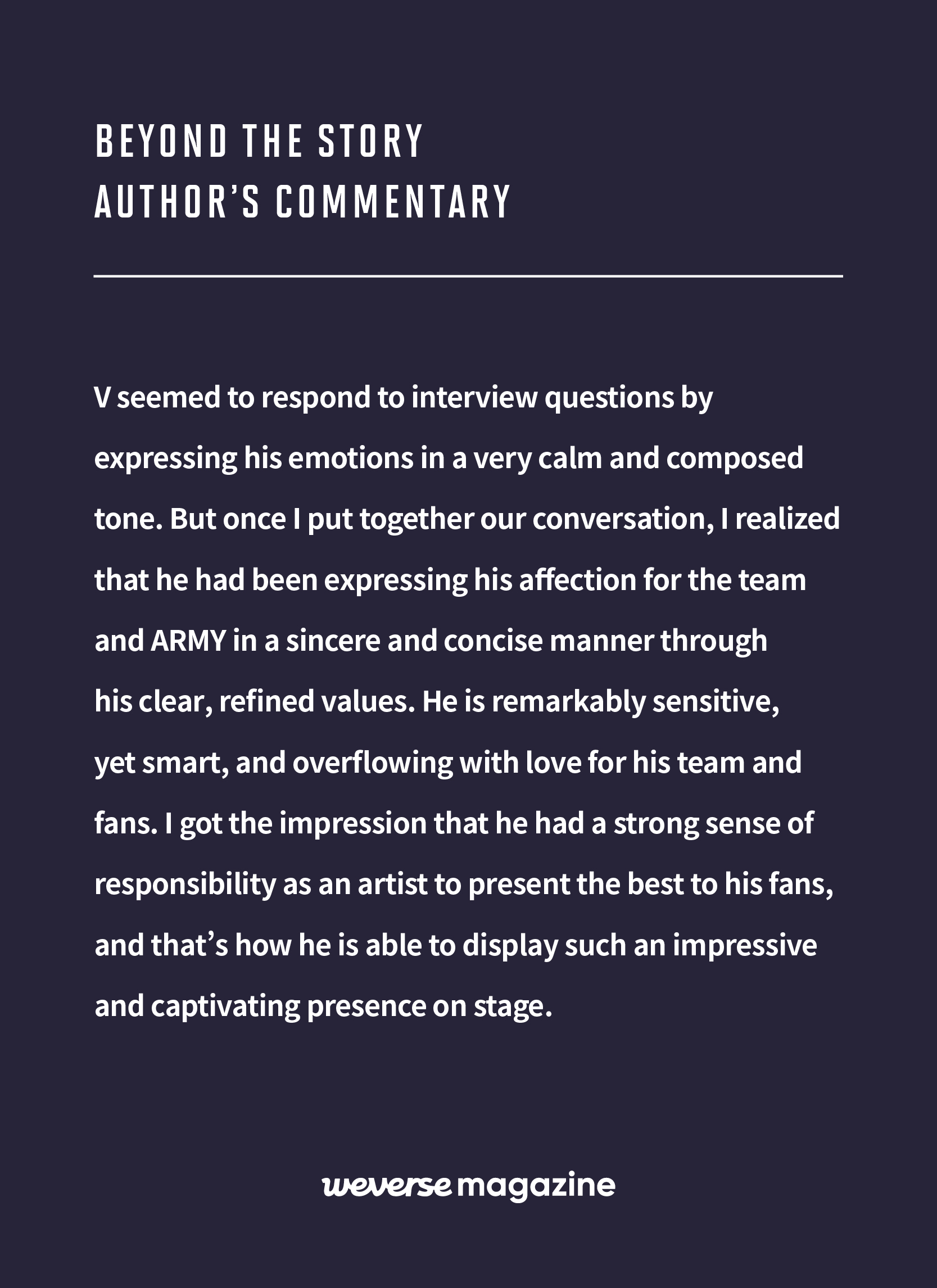
Celebrating the 10th anniversary of their debut, BTS released their official book BEYOND THE STORY: 10-YEAR RECORD OF BTS (hereinafter BEYOND THE STORY) on July 9th. Spanning a production period of three years, this book reconstructs the past ten years of BTS, with interviews of the members over the course of two years. The book showcases the journey of the seven youths who came together in Seoul ten years ago and became a global sensation, while also presenting a new starting point that hints at the future they will continue to shape. Additionally, it serves as a record of the K-pop industry during a particular era in which they have been actively involved. We asked Myeongseok Kang, Chief Editor of Weverse Magazine who interviewed BTS and authored the book, and Kim Yeonju, the project manager and editor of HYBE’s publications, to learn about the process behind the creation of this book.
Unauthorized reproduction and distribution prohibited.
